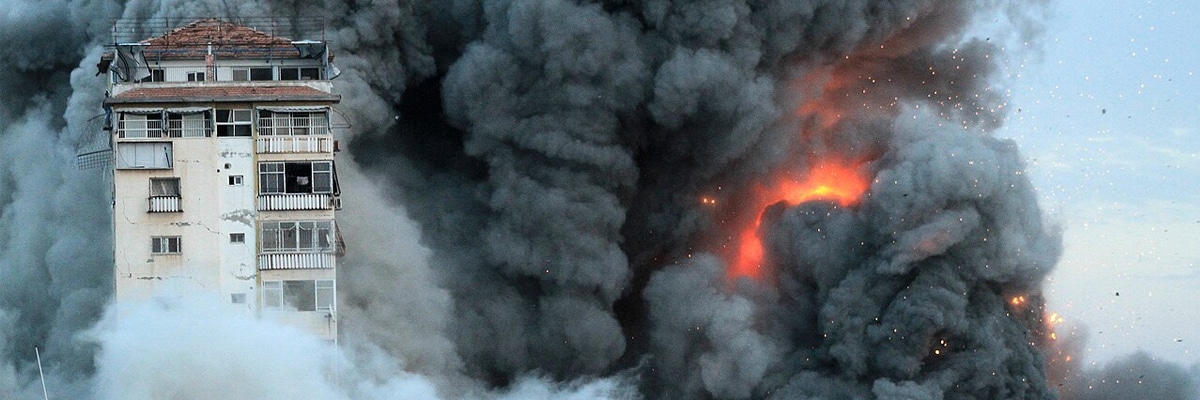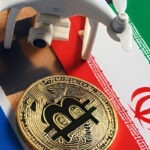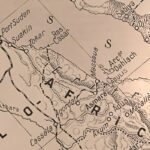October 7, 2023 will be remembered as a pivotal date in tomorrow's history books. Not only because that day began the first open war between Israel and Hamas, which in a single week left more than four thousand dead and more than twelve thousand wounded on both sides, but because of the epoch-making importance that will be assigned to it in the years to come. On that day, indeed, competition between great powers landed violently in the troubled Holy Land.
Iranian trainers, Russian hackers and Chinese weapons.
Hamas's semi-symmetrical war against Israel enshrines the arrival of competition between great powers in the Holy Land and the becoming of the Iran-Israel rivalry a matter (also) of Russia and China, which Iran (and its proxies) need in order to reduce U.S. influence in the strategic Middle East.
The secret recipe behind the surprise effect of what Hamas has dubbed Operation Flood al-Aqṣā, for that matter, has many multipolar ingredients: Iranian trainers, Russian hackers, Chinese and North Korean weapons. Iranian trainers to prepare the Hamas army. Russian hackers (it seems) to blind Israeli defenses in the moments before the simultaneous assaults on 10/7 and (confirmed) to target information and government sites during the conflict. Russian, Chinese and North Korean weapons in the Hamas arsenal. And, finally, plenty of cryptocurrencies.
Past and future. Premodernity and postmodernity. Archaeofuturism. Hamas prepared for war on Israel by building homemade weapons, such as rockets from pipes designed to carry water, and buying Russian, Chinese and North Korean weaponry on international black markets, including those invisible to the eyes of most: darknet markets.
On battlefields, Chinese Qian Wei-1 shoulder-fired missiles have been found, possible North Korean F-7 HE-Frag rocket launchers have been glimpsed, and many Chinese replicas of the celebrated AK-47 have been used. According to military analyst Matteo Picone, who was contacted for an opinion on the subject, "there are a lot of Chinese weapons in the Israeli-Palestinian context, particularly Type-56 assault rifles, but we would need imagery intelligence analysis to understand how many there actually are."
Part of the Chinese, North Korean and Russian-made weapons in the hands of the Ezzedin al-Qassam Brigades is the result of the historical smuggling that guerrilla and terrorist organizations active in the Palestinian Territories have up with Lebanon, Syria and Iran, but another part has been purchased through alternative, fledgling channels that are even more invisible to the intelligence services' radar: darknet markets.
Russians, Chinese and North Koreans are the overlords of the illegal darknet markets that sell the unsellable, from weapons to narcotics, from contract killings to human beings, and it is precisely in these deterritorialized places that Hamas, as of 2019, has set foot with the goal of spending the money it has scraped together in other intangible spaces, the cryptomarkets, as reconstructed by analyst Elham Makdoum. Spending it on weapons.
The Palestinian issue according to Beijing
Beijing's return to the Holy Land is nothing but déjà vu. Today, weapons made in China abound in the hands of Hamas soldiers, during the Cold War Japanese Red Army fighters lent manpower to the Popular Front for the Liberation of Palestine, and North Korea trained Yasser Arafat's army.
Geostrategy and geoeconomics intermingle in Beijing's grand vision for the Middle East. Palestine is a thorn in Israel's side, so it can be used to disrupt, to strike indirectly and even to distract the United States. Palestine is the cause of every Muslim, particularly the Arabs, so it can be agitated to win the sympathies of the umma. Turmoil in Israel can serve to sabotage the rival Belt and Road Initiative project, the India-Middle East-Europe Economic Corridor, whose goods are supposed to transit the port of Haifa.
China has (re)set foot in the Holy Land, on the side of Palestine, as it did during the (first) Cold War. The media system, as in the days of the 2021 confrontation, is offering readers and viewers an exclusively pro-Palestinian narrative. Diplomacy has taken advantage of the events to dust off the issue of the binational solution, acceding to Russia's call for a cease-fire, and announced the forthcoming dispatch of humanitarian aid to the Gazans.
Palestine is a place where Russia, China and Iran agree. Russia needs to punish Israel for its choice of field in the Ukraine war and repay the many favors it has received from Iran, which has acted as an ally in Syria and Ukraine. Iran wants to boycott the Abraham's Alliance and use the Palestinian issue to get closer to the rest of the umma. China yearns to instrumentalize the Israeli-Palestinian tensions to make space for itself in the umma, hence the intention to mediate between the two-which would be a success even if it failed-knowing that there will be much Islam in the BRICS+ and that the dream of the Multipolar Transition, i.e., of a post-American world, passes through the bloody lands of the Middle East.
The Middle Eastern horizon
The competition between great powers has just landed in the Holy Land, and it both presses and promises to cause geopolitical earthquakes in the Middle East, a region that will experience a crescendo of multidimensional pressures in the years to come due to the tug-of-war between Washington and the Moscow-Beijing-Tehran triad. Iranian-Saudi normalization was the first step. The rekindling of the Palestinian issue the second. Next will be attempts to produce a multifunctional Great Rapprochement among the leading powers in the Islamosphere, beginning with the simultaneous entry of Abu Dhabi, Cairo, Riyadh and Tehran into the BRICS, to co-opt Ankara into the multipolar scheme, to rehabilitate Damascus and to tune yuan and riyal.
Washington is in the Middle East to contain Tehran, to prevent Ankara's overextension, and to keep the Arab-Israeli marriage from collapsing. Beijing and Moscow are in the Middle East to give lifeblood to Tehran and to recruit the umma to the multipolar cause. Palestine will be one of the main places where the blocs will unload the tensions that have accumulated here and elsewhere. And which will one day explode again.
Geopolitical analyst, foreign policy consultant and author. Graduate in Area and global studies for international cooperation (University of Turin), educated between Italy, Poland, Portugal and Russia. Specialized in hybrid warfare, Latin American issues and post-Soviet space.









Scrivi un commento